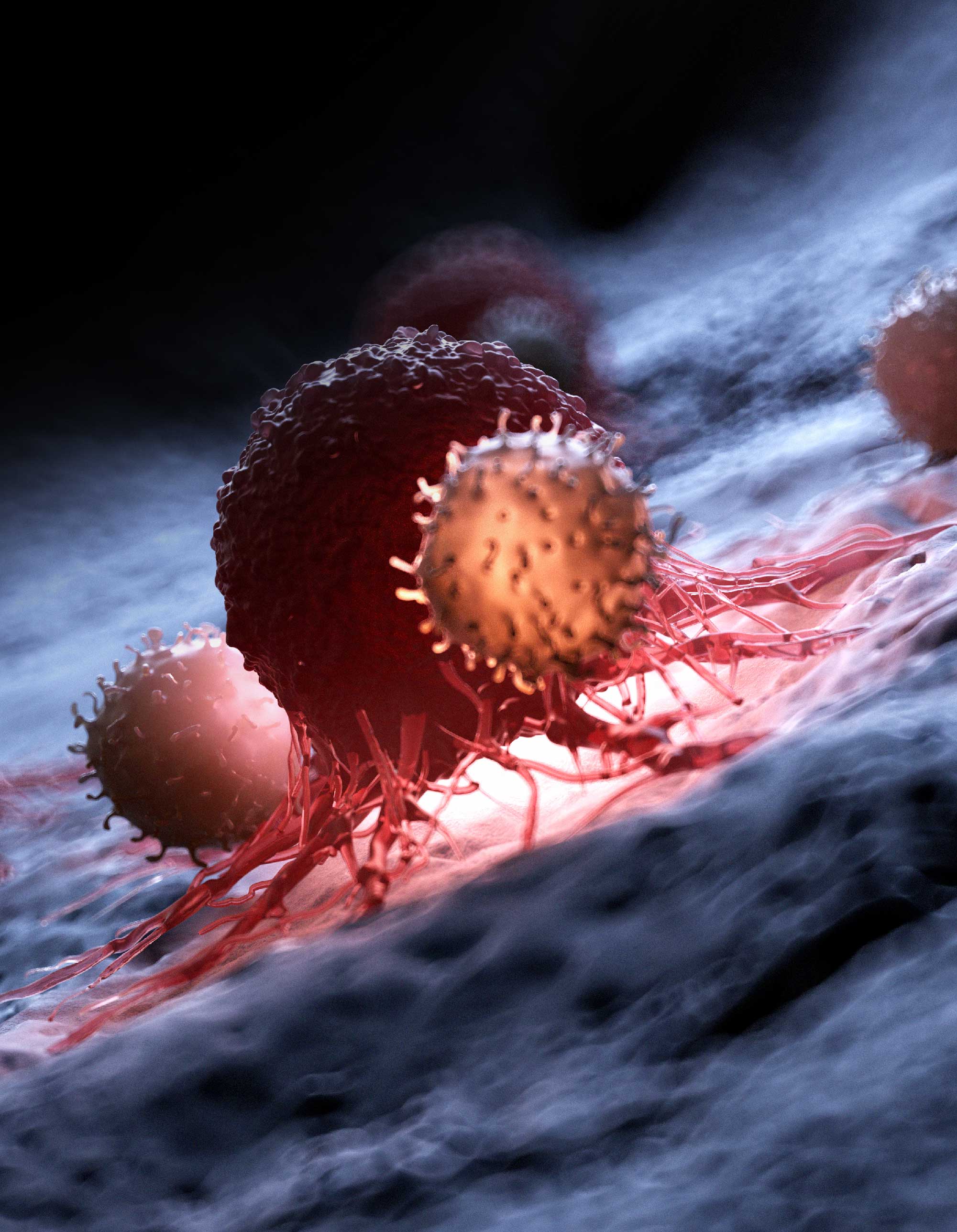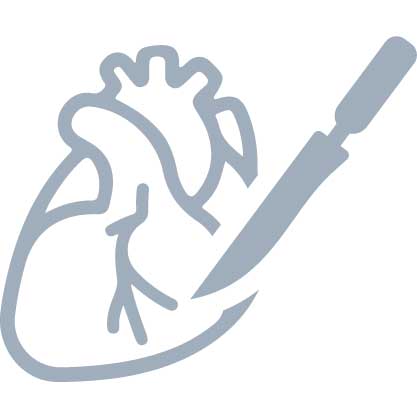
Hematology
What is Hematology?
The medical specialty that deals with blood (red blood cells, white blood cells, platelets, coagulation proteins, etc.), blood-forming organs (hematopoietic organs: bone marrow, spleen, lymph nodes, etc.) and diseases of these two structures is called hematology.
What are Hematological Diseases?
There are many blood diseases (hematological diseases) originating from different blood cells or blood production organs. These diseases can be seen in both adult and pediatric age groups, and some of them are of genetic origin.Some of the blood diseases, which can cause significant problems by changing the number, structure or functions of blood cells, are of sudden onset and have an aggressive course (acute diseases), while others progress more slowly over time (chronic diseases).Some of the common pathological clinical pictures related to blood cells can be summarized as follows:
- Anemia (Red blood cell deficiency, anemia)
- Leukopenia (White blood cell deficiency)
- Thrombocytopenia (Platelet deficiency)
- Polycythemia (Red blood cell excess, erythrocytosis)
- Leukocytosis (White blood cell excess)
- Thrombocytosis (Excess platelet)
These clinical manifestations can be both benign (benign) diseases as well as manifestations of malignant diseases called hematological cancers, which can be fatal if left untreated and require more complicated follow-up and treatment.
Major hematological diseases:
1- Erythrocyte/Red blood cell/Red blood cell-derived hematological diseasesAnemia (Anemia)It is a fairly common disease. It most commonly occurs due to the deficiency of iron in the body, which has an important role in the structure of erythrocyte, and is called iron deficiency anemia. The most common hematological disease in the community is iron deficiency anemia. It occurs as a result of another medical problem and the underlying cause should be investigated.However, there are also different types of anemia that can progress more severely. In addition, anemia can occur with other diseases or as a side effect of some drugs.Some types of anemia other than iron deficiency anemia include:Pernicious anemia: It is an autoimmune disease in which vitamin B12 (cobalamin), which is necessary for the normal functioning of blood formation (hematopoiesis), cannot be adequately absorbed.
- Sickle cell anemia: Anemia caused by a structural defect caused by a genetic mutation in hemoglobin molecules in red blood cells.
- Aplastic anemia: It is a rare, serious type of bone marrow failure that occurs when the bone marrow cannot make enough new blood cells.
- Autoimmune hemolytic anemia: It is a type of anemia that occurs when red blood cells are destroyed by the body's own immune system.
ThalassemiaA group of inherited blood disorders that affect normal hemoglobin production. When red blood cells do not have enough hemoglobin, oxygen does not reach all parts of the body. As a result, organ damage may occur (bone deformities, heart-kidney problems, etc.).
1-Hematological diseases originating from leukocytes / White blood cells / White blood cells
Leukocytes, which are found throughout the body, including the circulatory system and the lymphatic system, are cells that play an important role in the immune system, which protects the body against microbiological infectious diseases. There are sub-cell types with structural and functional differences: lymphocytes, neutrophils, eosinophils, basophils and monocytes.
It is a type of blood cancer in which there is an increase in the amount of malignant/malignant white blood cells in the bone marrow, which is the blood production center. It can affect any age group. It can present as acute leukemia or chronic leukemia in children and adults. Chronic leukemia progresses more slowly.
They are malignant/malignant diseases of the lymphatic system in which white blood cells change and become uncontrollable. There are 2 main types of lymphoma, Hodgkin lymphoma and non-Hodgkin lymphoma.
It is a hematological disease that manifests itself with uncontrolled increase and proliferation of plasma cells (developing from B lymphocytes) and deterioration in their functions. The abnormal proteins produced by uncontrolled plasma cells are not functional, they do not fight infections, and they damage many structures, especially the kidneys and skeletal system.
- Myelodysplastic syndrome (MDS)
It is a hematological disease that occurs due to a problem in the production of blood cells in the bone marrow and is characterized by problems in immature white blood cells.
2- Hematological diseases originating from platelets
Platelets are non-nucleated cells that play a key role in blood clotting. Platelet-borne diseases are generally inherited.
It is a blood clotting disorder that occurs especially in men and can have fatal consequences. Such patients experience significant bleeding problems.
3- Platelet function disorders
They are non-hereditary and hematological diseases resulting from platelet disorders that occur later for various reasons. Depending on the severity of the table, bleeding disorders may occur.
It is one of the most common inherited hematological diseases and is caused by a deficiency of a protein called Von Willebrand factor (VWF) that helps blood to clot. The patient has a high risk of bleeding.
It is a disease in which more platelets are produced than normal in the bone marrow, thus increasing the risk of blood clotting. It can cause high rates of stroke/stroke or heart attack.
What are the Symptoms of Hematological Diseases?
Symptoms of hematological disorders vary according to the affected blood cell. Common findings in red blood cell disorders, which are responsible for transporting oxygen in the body:oFatigueoPalenessoDifficulty concentrating and learningoHeart palpitations (tachycardia)Common findings in white blood cell disorders in the immune system:oChronic infectionsoFatigueoWeight lossoHeadacheoMood disordersCommon findings in diseases related to thrombocyte involved in blood coagulation:oBruises on the skin, subcutaneous hemorrhagesoPetechiae (tiny red spots under the skin)oSlow-healing wounds and cutsoNosebleedsobleeding gumsoVascular occlusions, strokes (in cases where the platelet count is high) These complaints listed above can also be seen in many non-hematology diseases. In the presence of these findings, the physician may request examinations starting from simple to very complex advanced laboratory examinations in order to evaluate together with the examination findings and to make the differential diagnosis of a hematological disease.Some of these could be:
- Simple blood count
- Microscopic examination of blood
- Molecular biological tests
- Flow cytometry
o Immunophenotypingo Bone marrow aspiration and bone marrow biopsyo Fluorescence in situ hybridization (FISH)
What are the Treatment Options in Hematological Diseases?
Developments in the field of medicine strengthen the hand of physicians in the fight against hematological diseases and ensure that the results obtained from these treatments are more satisfactory.Treatment of hematological diseases can vary greatly depending on the disease and the condition of the patient.Diet and life regulations, iron, B vitamin supplements may be sufficient in some of the anemias. While steroid and oral chemotherapies are necessary in chronic neoplastic diseases, intensive chemotherapy should be applied in lymphomas and multiple myeloma. In some of the diseases, transfusion of blood and blood products, radiotherapy and surgical interventions may be required from time to time. In some cases, bone marrow transplants and genetically modified cell therapies are the most accurate treatment options.
What is Bone Marrow Transplantation?
- The “stem cells” found in the bone marrow are responsible for the production of blood cells in the body. In cases where the bone marrow is damaged or lost its function, the reintroduction of new “stem cells” obtained through various means into the body through the vein is called “bone marrow transplant”.
- The person from whom the stem cells are taken is called a donor/donor, and bone marrow transplants are classified according to the donor. Namely;
- Autologous transplant:
- The donor is the patient himself. Stem cells taken from the patient are frozen and transplanted back to him after certain procedures. The aim here is to reset the bone marrow damaged by high-dose chemotherapy and/or radiotherapy to be given for treatment. Multiple myeloma, Hodgkin lymphoma, non-Hodgkin lymphoma and acute myeloid leukemia are among the diseases that autologous transplantation can be performed.
o Allogeneic transplant:o The donor is someone else. In this option, the stem cells to be given must have tissue compatibility (HLA compatibility) with the patient. The higher the tissue compatibility, the higher the chance of success. An 8/8 or 10/10 fit is considered a perfect fit, and a 7/8 or 9/10 fit is considered a good fit. Therefore, relatives are the primary candidates in this type of transplant due to their genetic similarity. These transplants from a relative donor are called “Allogeneic related transplant” or “Allogeneic related transplant”. In case of lack of compatibility between relatives, domestic and foreign stem cell banks are scanned to search for a compatible donor. This transplant is called “Allogeneic unrelated-unrelated transplant”. Allogeneic transplantation is an important treatment option in some types of acute and chronic leukemia and lymphoma.o Haploidentic transplanto In cases where a fully compatible donor cannot be found, transplantation from a first-degree relative (parent-sibling-child) with HLA incompatibility between the patient and the donor is called “haploidentic transplantation” or “partially incompatible transplantation”. At least 50% compliance is achieved.
How is Bone Marrow (stem cell) taken? Does the Donor Suffer in Health?
Stem cells are obtained from the donor's bone marrow or peripheral blood via vascular access by minimally invasive methods. Before the procedure, the donor is given a 5-day treatment to ensure that the stem cells are circulated. There is no early or late harm in being a donor for stem cells. In some cases, there may be stiffness and general body fatigue at the treated site for several days. The donor body replaces the stem cells within a few weeks.
Post-Transplant Follow-up?
The most important problem in all transplants is the failure of the procedure, that is, the inability of the given stem cells to settle in the bone marrow sufficiently. In this case, the transplant procedure is repeated. Another undesirable situation is the recurrence of the disease despite the marrow transplant. In this case, new treatment protocols are applied.In addition, the reaction of the donor's strong cells against the patient's cells after allogeneic transplants, namely Graft Versus Host Disease (GVHD), is among the important problems and requires serious struggle. This situation can be seen at a rate of 30-40% in relative transplants and 50-60% in non-relative transplants.The patient, who is kept under intensive follow-up in private rooms after the transplant, should also follow routine outpatient follow-up programs after discharge. Previously weekly controls are followed by monthly and annual controls. It may take a period of 6 months to return to normal working life.
Updated date : Eylül 06, 2023
Upload date : Haziran 15, 2023





























